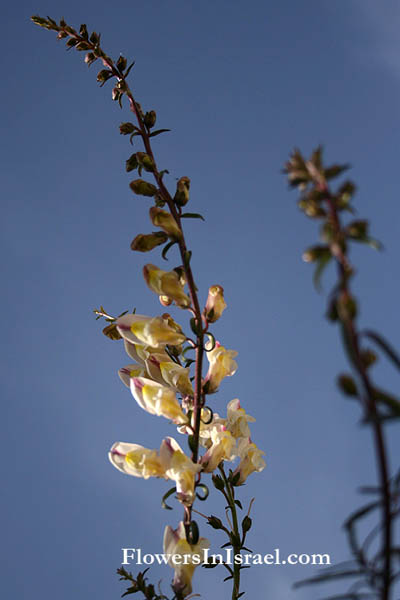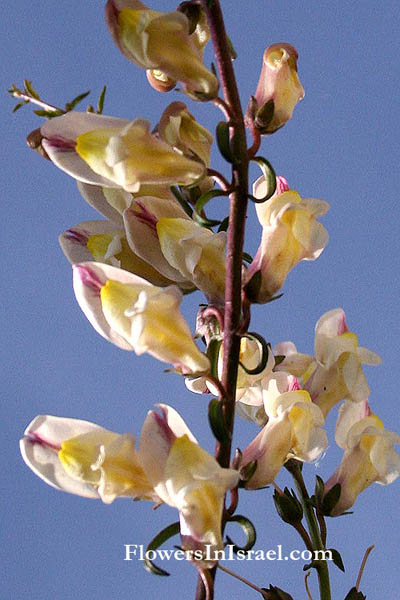Hebrew: לוע-ארי סיצילי, Arabic: فم السمكة الصقلي
| Scientific name: | Antirrhinum siculum Mill. | |
| Scientific name: | Antirrhinum angustifolium Poir. | |
| Common name: | Snapdragon | |
| Hebrew name: | לוע-ארי סיצילי | |
| Arabic name: | فم السمكة الصقلي | |
| Family: | Scrophulariaceae, לועניתיים |

|
| Life form: | Chamaephyte | |
| Stems: | green glabrous, erect stems of about 20-50cm, basal branching, hirsute; main stem possess a yellow-cream inflorescence at the top | |
| Leaves: | Alternate, entire | |
| Flowers: | Short-stalked racemes; 5 sepals; white, cream and yellow bilaterally symmetrical corolla, 4 stamens,simple pistil | |
| Fruits / pods: | Beige, indehiscent poricidal capsule; about 1mm long, dark reddish brown, oval seed | |
| Flowering Period: | March, April, May, June | |
| Habitat: | Walls | |
| Distribution: | Mediterranean Woodlands and Shrublands, Deserts and extreme deserts | |
| Chorotype: | Mediterranean | |
| Summer shedding: | Perennating |

Derivation of the botanical name: Antirrhinum, from Greek anti (αντι), "like," and rhis (ριϛ, ινοϛ), "nose", inus (-ινοϛ), probably referring to the nose-like capsule in its mature state. siculum, Siculus, of or pertaining to Sicily, Sicilian. angustifolium, angustus, "drawn together, narrow"; folium, leaf; meaning narrow leaved. The Romans called it leonis ora, or “lion’s mouth.” The Old French word for Snapdragon was muflier, or “snout”; the Italians called the flower bocca de leone, and the Germans Löwenmäul, which both mean “lion’s mouth.” The Hebrew word: לוע-ארי, loah-arie, “lion’s mouth.”
|